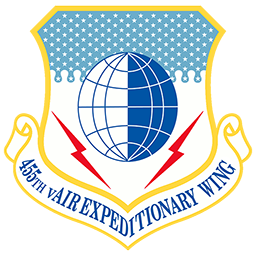[Note: Read with the spirit that this was intended - only for some light-hearted fun and possibly some learning points].
This report details the findings of the Accident Investigation Board (AIB) concerning the loss of F-16C, serial number 91-097, assigned to the 8th Virtual Fighter Squadron (vFS) under the 455th Virtual Air Expeditionary Wing (vAEW). The incident occurred during a High Angle Strafe (HAS) event at Range 64 in the Nevada Test and Training Range (NTTR) on July 17th, 2024. The aircraft was lost due to Controlled Flight Into Terrain (CFIT). The Upgrading Pilot (UP) did not attempt to eject and was subsequently lost.
Mission Overview
The UP was conducting a Surface Attack Tactics (SAT-1C) sortie, which involved various high-intensity maneuvers. This was a two-ship sortie led by an acting Instructor Pilot (IP), with the UP acting as the wingman.
Sequence of Events
The vAIB conducted a thorough analysis of the incident, including pilot factors, aircraft performance, environmental conditions, and recovery maneuvers.
Conclusion
The loss of F-16CM, serial number 91-097, underscores the inherent risks associated with high-angle strafe missions. While target fixation is a known hazard, this incident highlights the need for ongoing vigilance and continuous improvement in training and operational procedures to mitigate such risks.


Executive Summary
This report details the findings of the Accident Investigation Board (AIB) concerning the loss of F-16C, serial number 91-097, assigned to the 8th Virtual Fighter Squadron (vFS) under the 455th Virtual Air Expeditionary Wing (vAEW). The incident occurred during a High Angle Strafe (HAS) event at Range 64 in the Nevada Test and Training Range (NTTR) on July 17th, 2024. The aircraft was lost due to Controlled Flight Into Terrain (CFIT). The Upgrading Pilot (UP) did not attempt to eject and was subsequently lost.
Mission Overview
The UP was conducting a Surface Attack Tactics (SAT-1C) sortie, which involved various high-intensity maneuvers. This was a two-ship sortie led by an acting Instructor Pilot (IP), with the UP acting as the wingman.
Sequence of Events
- Firing Pass: The UP commenced firing at an altitude of 3471 feet Above Ground Level (AGL), with a nose-low attitude of 50°, at a speed of 587 Knots Calibrated Air Speed (KCAS).
- Cease Fire and Recovery Attempt: Firing ceased at 1869 feet AGL. Recovery was initiated at approximately 1941 feet AGL, at time 01:05:01 (from mission start), with the aircraft wings level and pulling 8G.
- Maneuver and Impact: The UP then executed a left roll to 60° with a maximum G-load of 9.5, which was moderated to 9G by the Flight Control System (FLCS). Despite these corrective maneuvers, the aircraft descended to 302 feet AGL at a speed of 592 KCAS. The aircraft impacted the ground at a 15° nose-low attitude while still under 9G at 01:05:05.
The vAIB conducted a thorough analysis of the incident, including pilot factors, aircraft performance, environmental conditions, and recovery maneuvers.
- Pilot Factors:
- Target Fixation: The UP's intense focus on the target likely led to a phenomenon known as target fixation, where the pilot’s attention is so heavily concentrated on the target that peripheral awareness is significantly reduced. This likely delayed the recovery initiation and impaired the effectiveness of corrective maneuvers.
- Workload and Stress: The cognitive workload associated with HAS events is substantial, particularly for an UP. The high-stress environment can contribute to decision-making delays and errors in judgment.
- Aircraft Performance:
- Flight Control System (FLCS): Data from the F-16C’s flight data recorder (FDR) indicates that the FLCS functioned within design parameters. The system's moderation of G-forces was appropriate given the inputs from the pilot.
- System Integrity: No malfunctions or system failures were identified that could have contributed to the incident. All aircraft systems were functioning as intended.
- Environmental Conditions:
- Weather: Weather conditions were within acceptable parameters for the mission. Visibility was clear, and no significant environmental factors, such as turbulence or adverse weather, contributed to the mishap.
- Terrain: The NTTR’s Range 64 has varied terrain, but the specific area of the incident was not identified as particularly hazardous beyond the usual risks associated with HAS events.
- Initial Recovery: The UP initiated recovery at 1941 feet AGL with an 8G pull while wings level. This initial recovery was appropriate but was not sufficient to arrest the descent in time.
- Banked Recovery: The subsequent 60° left roll with a maximum G-load of 9.5G (moderated to 9G by the FLCS) complicated the recovery. This maneuver, while aggressive, did not provide the necessary altitude recovery given the speed and descent rate.
- Wings Level Recovery: A detailed simulation was conducted to assess whether a wings level recovery would have been more effective. The simulation indicates that a sustained wings level recovery with maximum available G-force would have provided a higher probability of avoiding ground impact. The wings level maneuver would have maximized altitude gain and mitigated the descent rate more effectively than the banked recovery.
Time Compression and Altitude Loss
- Time Compression: The rapid sequence of events leading to the crash highlighted the phenomenon of time compression, where high-speed, high-intensity situations reduce the perceived amount of time available to react. From the initiation of recovery at 01:05:01 to impact at 01:05:05, only four seconds elapsed.
- Altitude Lost: During these four seconds, the aircraft descended from 1941 feet to 302 feet AGL, losing 1639 feet. This rate of descent underscores the critical importance of immediate and effective recovery maneuvers.
- Reaction Time: Given the high speed and rapid descent, the UP had extremely limited time to react. The banked maneuver, which added complexity to the recovery, further reduced the effectiveness of the attempted pull-out.
Minimum Altitude for Recovery
- Simulation Findings: Simulations indicate that for a 60° banked recovery with a maximum G-load of 9.5G, the minimum altitude required to avoid terrain impact would have been approximately 2500 feet AGL. The UP initiated recovery at 1941 feet AGL, which was insufficient given the bank angle and speed.
- Optimal Recovery: A wings level recovery initiated at 1941 feet AGL with maximum G-force would have been more effective, requiring an estimated 1800 feet AGL to avoid impact. This suggests that even with a wings level recovery, the margin for error was extremely narrow.
- Primary Cause: The mishap was primarily caused by CFIT due to target fixation. The UP's focus on the target impaired situational awareness and delayed recovery initiation.
- Contributing Factors:
- Cognitive Workload: High cognitive workload during HAS events contributed to delayed recovery and impaired judgment.
- Recovery Maneuver: The choice of a 60° banked recovery maneuver was less effective than a wings level recovery would have been.
- Time Compression: The rapid sequence of events and high-speed nature of the maneuver reduced the perceived and actual time available to react, exacerbating the difficulty of effective recovery.
- Altitude Insufficiency: The altitude at which recovery was initiated was insufficient for a banked recovery given the speed and G-forces involved.
- Response Effort: An HH-60G Pave Hawk from the 48th Virtual Rescue Squadron (vRQS) was immediately scrambled and arrived on scene shortly thereafter. Despite a prompt response, the search and rescue team was unable to recover any remains due to the impact's severity and the resulting conditions at the crash site.
- Training Enhancements: Implement additional training scenarios focusing on target fixation mitigation, including simulator exercises emphasizing high-stress recovery maneuvers.
- Procedure Review: Re-evaluate and potentially revise the altitude and maneuver parameters for HAS events to provide a greater safety margin for recovery.
- Safety Programs: Increase emphasis on the importance of situational awareness and risk management during high-intensity maneuvers in safety briefings and training programs.
Conclusion
The loss of F-16CM, serial number 91-097, underscores the inherent risks associated with high-angle strafe missions. While target fixation is a known hazard, this incident highlights the need for ongoing vigilance and continuous improvement in training and operational procedures to mitigate such risks.


Last edited:
